Just about every innovation in the world of art was heavily criticized in the beginning. The same applied to this famous French artist.
Auguste Rodin (1840-1917) is considered to be the founding father of modern sculpture because he was one of the first artists who went against conventional ideas of sculpture.
His talent and unique approach eventually convinced even his staunchest critics and he became one of the most celebrated French sculptors by the turn of the 20th century.
If you want to exclusively admire his works then you can either visit the Musée Rodin in Paris or the Rodin Museum in Philadelphia. These are both museums dedicated to his work.
Below you’ll find a list of some of the most famous Auguste Rodin Sculptures. These are the artworks that solidified his reputation among the greatest sculptors in history.
1. The Thinker
- Date created: 1902
- Dimensions: 189 x 98 x 140 centimeters (74.4 x 35.58 x 55.11 inches)
- Location: Musée Rodin, Paris France
The Thinker is without a doubt the most famous of all Auguste Rodin Sculptures. It depicts a sitting man as he is contemplating while his head is resting on his hand. The nude male is sitting on top of a rock and is believed to represent an allegory of philosophy.
Although the sculpture was part of a large commission in the 1880s, the first version of the sculpture wasn’t cast until the early 20th century. The original cast can be found at the Musée Rodin in Paris, the former mansion of the artist also known as the Hôtel Biron.
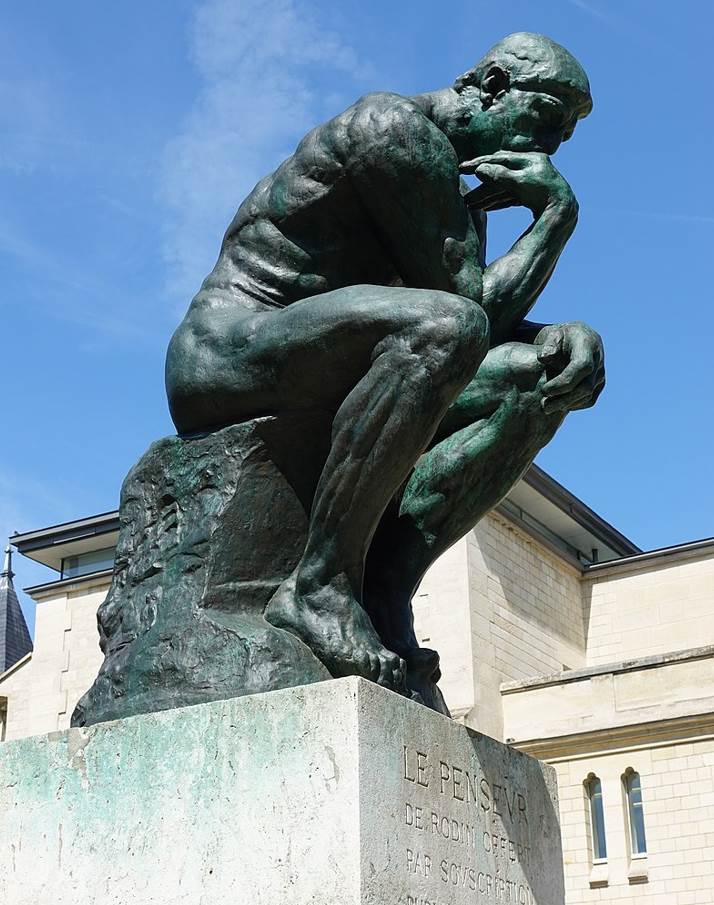
2. The Gates of Hell
- Date created: 1880-1917
- Dimensions: 6 x 4 x 1 meters (19.7 × 13.1 × 3.3 feet)
- Location: Musée d’Orsay, Paris, France (original plaster cast)
The Gates of Hell is a monumental work of art that was originally commissioned in 1880 by the Directorate of Fine Arts. The planned museum in which this work was to be placed never opened but Rodin kept on working on his Magnum Opus until the day he passed away.
The immense sculptural group depicts a scene from Dante’s Inferno, a section of the 14th-century Italian poet’s “Divine Comedy.” Although the concept of the work is quite different, Rodin based it on the doors of the Florence Baptistery, a work by Ghiberti once referred to by Michelangelo as “The Doors of Paradise.”
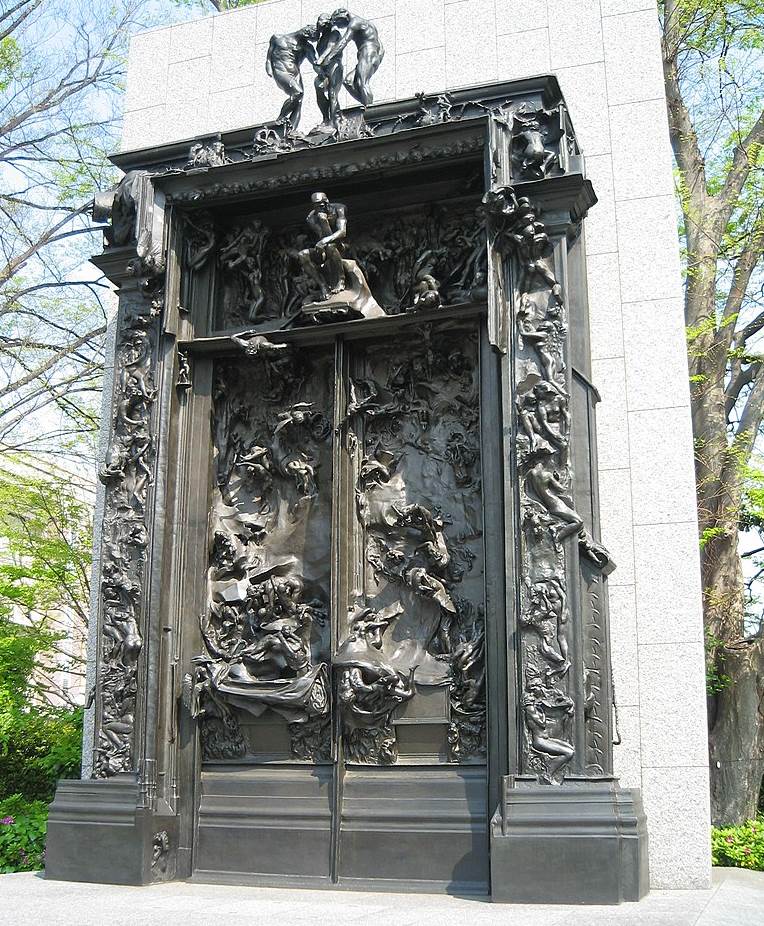
3. The Age of Bronze
- Date created: 1876
- Dimensions: 182.9 centimeters (72 inches)
- Location: Nationalmuseum, Stockholm, Sweden
The Age of Bronze is a sculpture of a nude male that was originally cast in the 1870s. Rodin made multiple preparatory drawings for the work in which he used a Belgian soldier as a model. These drawings survive today and are part of the collection of the Musée Rodin.
The sculpture was loosely based on one of Michelangelo’s sculptures called “Dying Slave (1513-1516). Rodin continued to make casts of this work in the decades after it was initially completed. This means that the sculpture can be found in museums all around the world.

4. The Walking Man
- Date created: 1907
- Dimensions: 86 x 56 x 28 centimeters (33.85 x 22.04 x 11.02 inches)
- Location: Art Institute of Chicago, Chicago, United States
The Walking Man is an Impressionist sculpture by Auguste Rodin that depicts a nude male without a head and arms. It’s his best-known incomplete work and is believed to be based on one of his earlier sculptures of a complete figure.
It was produced in the year 1907 and defines the final phase of Rodin’s career. The figure features a powerful stance that was in contrast to sculptures created in antiquity. In that sense, it’s a work that emphasises the premphasizesluence Rodin had on the course of modern sculpture.
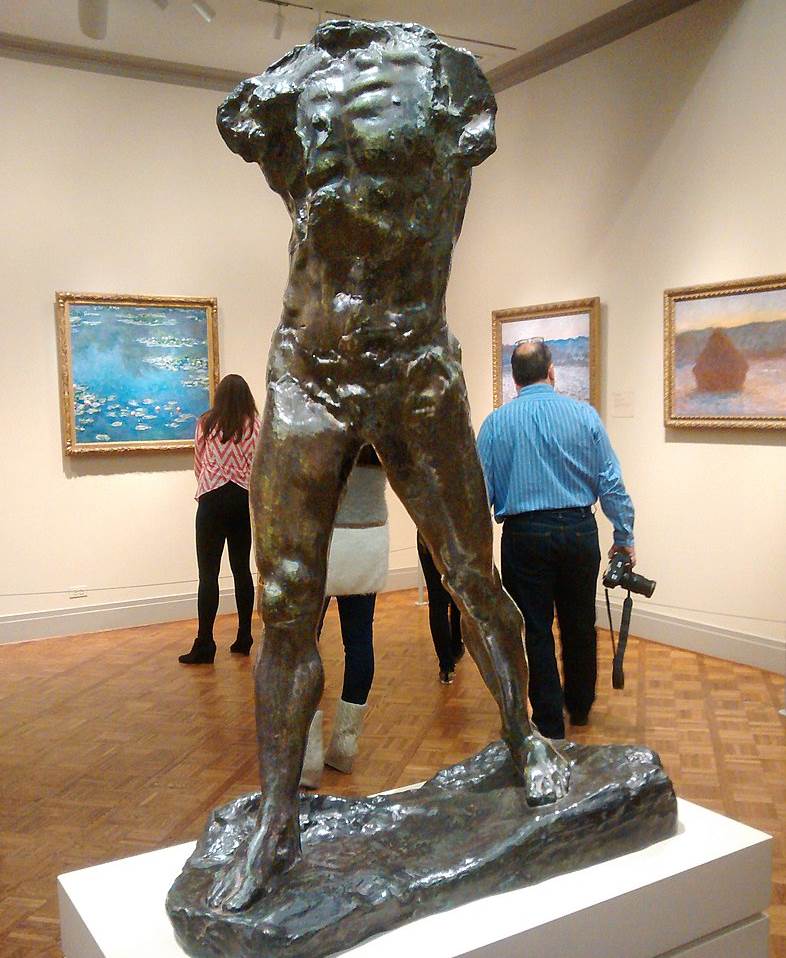
5. The Kiss
- Date created: 1882
- Dimensions: 181.5 × 112.5 × 117 centimeters (71.5 × 44.3 × 46 inches)
- Location: Musée Rodin, Paris, France
The Kiss is a work that depicts a couple in a loving embrace as they kiss each other. This makes it very remarkable that this lovely sculpture was once part of the set of reliefs that Rodin produced for his monumental Gates of Hell.
He didn’t use this relatively large sculpture in the final work but he did include a similar sculpture in the right column of the gates. The reason why it was included in the Gates of Hell is that it depicts Francesca da Rimini, an Italian medieval noblewoman who was murdered by her husband.
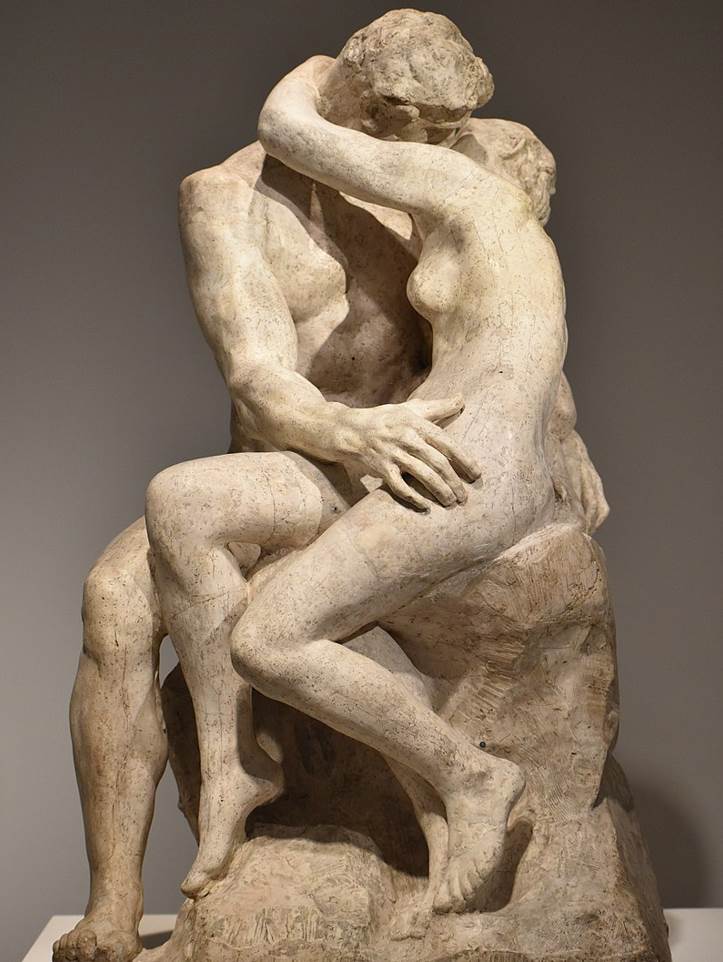
6. The Burghers of Calais
- Date created: 1884-1889
- Dimensions: 201.6 × 205.4 × 195.9 centimeters (79.37 × 80.87 × 77.12 inches)
- Location: Calais, France
The Burghers of Calais is a sculpture that was commissioned by the city of Calais to commemorate an event that took place during the Hundred Years’ War (1337-1453). The city of Calais was besieged by the English for 11 months and the people of the city eventually surrendered.
The story is that all people would be saved if the 6 most prominent men (Burghers) surrendered themselves to King Edward III. They surrendered but their lives were spared due to the intervention of England’s queen, Philippa of Hainault. The sculpture commemorating the heroic Burghers of Calais is located right in front of the Hôtel de Ville of Calais.
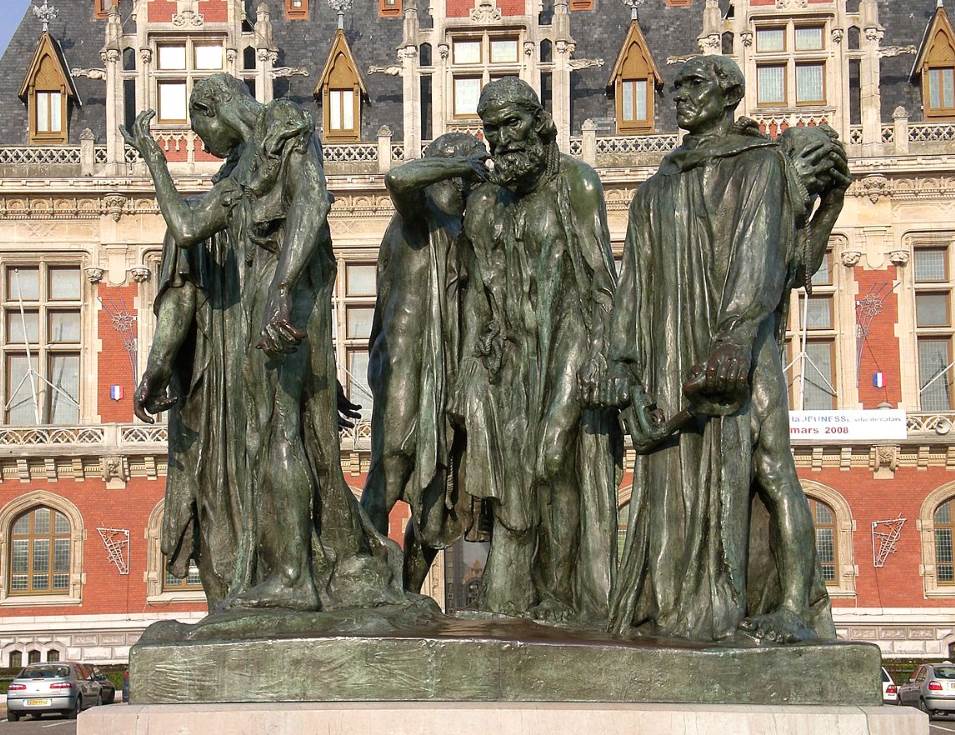
7. Monument to Balzac
- Date created: 1892-1897
- Dimensions: 282 x 122.5 x 104.2 centimeters (111.02 x 48.22 x 41.02 inches)
- Location: Boulevard Raspail, Paris, France
The Monument to Balzac is another commemorative sculpture produced by Auguste Rodin in the 1890s. It was commissioned by the Société des Gens de Lettres in honor of the famous French writer Honoré de Balzac (1799-1850), a man who produced works related to life in France following the Napoleonic Wars.
It’s hard to deny the fact that this is a peculiar sculpture by Rodin and it’s no surprise that it was criticized when it was first exhibited at a Salon in 1898. It was subsequently rejected by the Société and never put n public display during the artist’s lifetime. It was finally placed in a small public park at the Boulevard Raspail in the Montparnasse neighborhood of Paris in 1939.
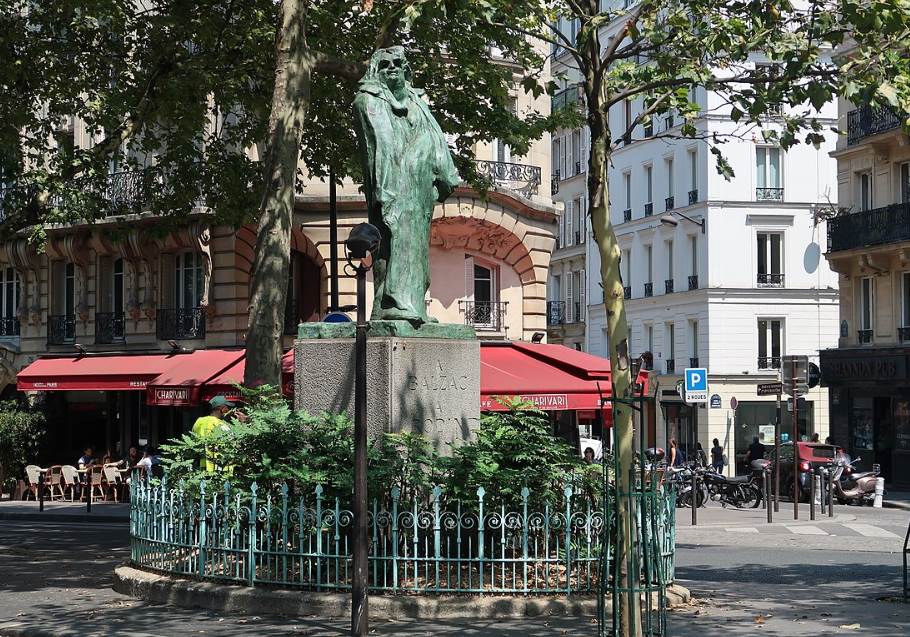
8. Saint John the Baptist
- Date created: 1877-1880
- Dimensions: 200.1 centimeters (78.77 inches)
- Location: Musée d’Orsay, Paris, France
Saint John the Baptist or “Saint John the Baptist Preaching” is a larger-than-life figure that was produced shortly after he completed the Age of Bronze. He was apparently inspired by a similar sculpture produced by an unknown Italian artist, remarking about this work: “As soon as I saw him, I was filled with admiration.”
Auguste Rodin first exhibited this work at the Paris Salon in 1880. It’s another sculpture of which Rodin produced several versions, including smaller ones. This means that a large number of versions of Saint John the Baptist can be admired in museums all around the world.
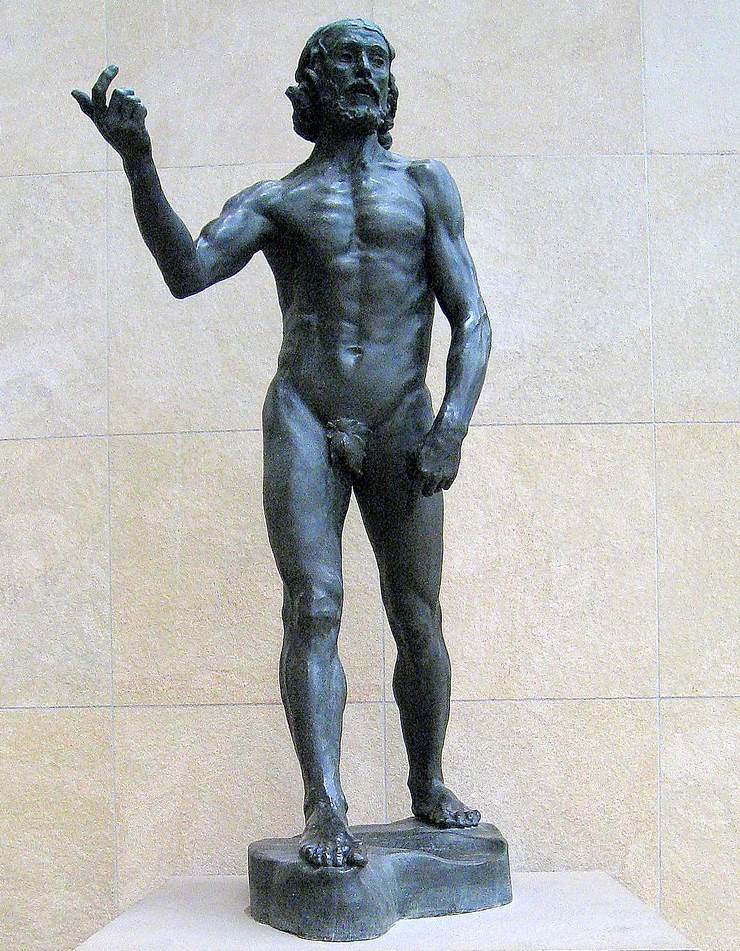
9. The Shade
- Date created: 1880
- Dimensions: 191.8 × 112.1 × 50.2 centimeters (75.51 x 44.13 x 19.76 inches)
- Location: Musée Rodin, Paris, France
The Shade is a sculpture that was originally part of the Gates of Hell and which consisted of 3 different works. WHat’s remarkable about this work is the original cast didn’t have a hand. This was only added by another Czech sculptor named Josef Maratka (1874-1937).
Rodin used the three versions to produce a much larger work as well titled “The Three Shades.” The sculpture integrates the three original works into one single piece. The bronze sculpture found in the garden of the Musée Rodin was cast in 1946 using the plaster cast that was completed in 1904.
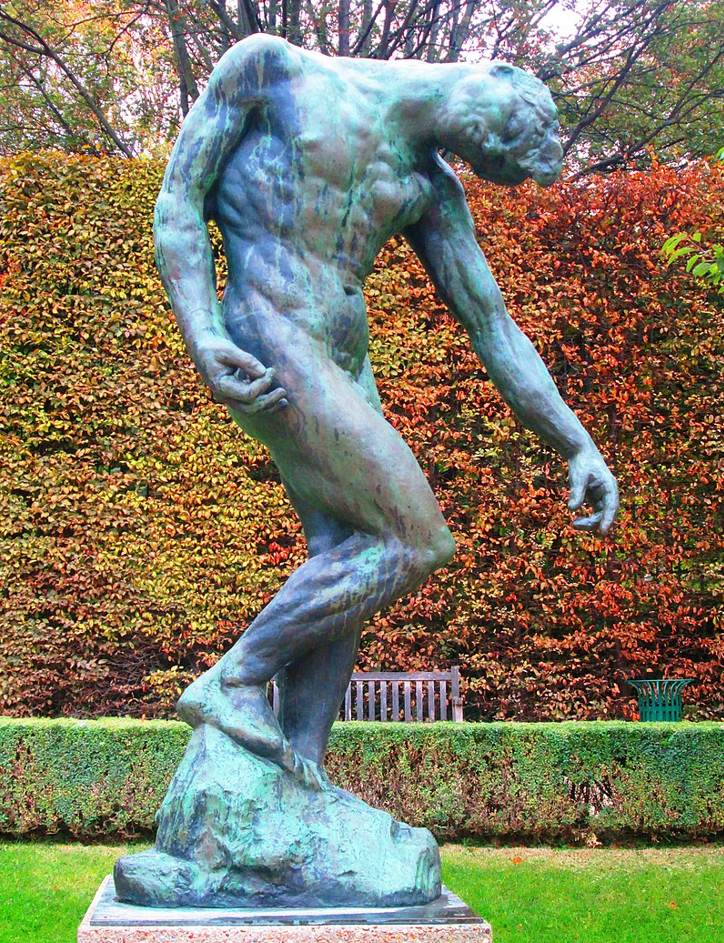
10. Eve
- Date created: 1899
- Dimensions: 66 x 70.2 x 42.2 centimeters (26 x 27.62 x 16.62 inches)
- Location: Tuileries Garden, Paris, France
Eve is a nude sculpture depicting Eve after the Fall of Man, the Biblical story in which the innocent god-fearing Adam and Eve become disobedient sinners. As you surely expected, this was another work that was originally produced for the Gates of Hell.
He already completed a sculpture of Adam several years earlier, a work that was displayed at the Paris Salon in 1881. The sculpture was initially intended to be much bigger but he had to abandon the idea when his model, a woman named Adèle Abruzzese, became pregnant. The bronze sculpture was first displayed at the Paris Salon in 1899 and can now be admired at the enjoyable Tuileries Garden in Paris.



